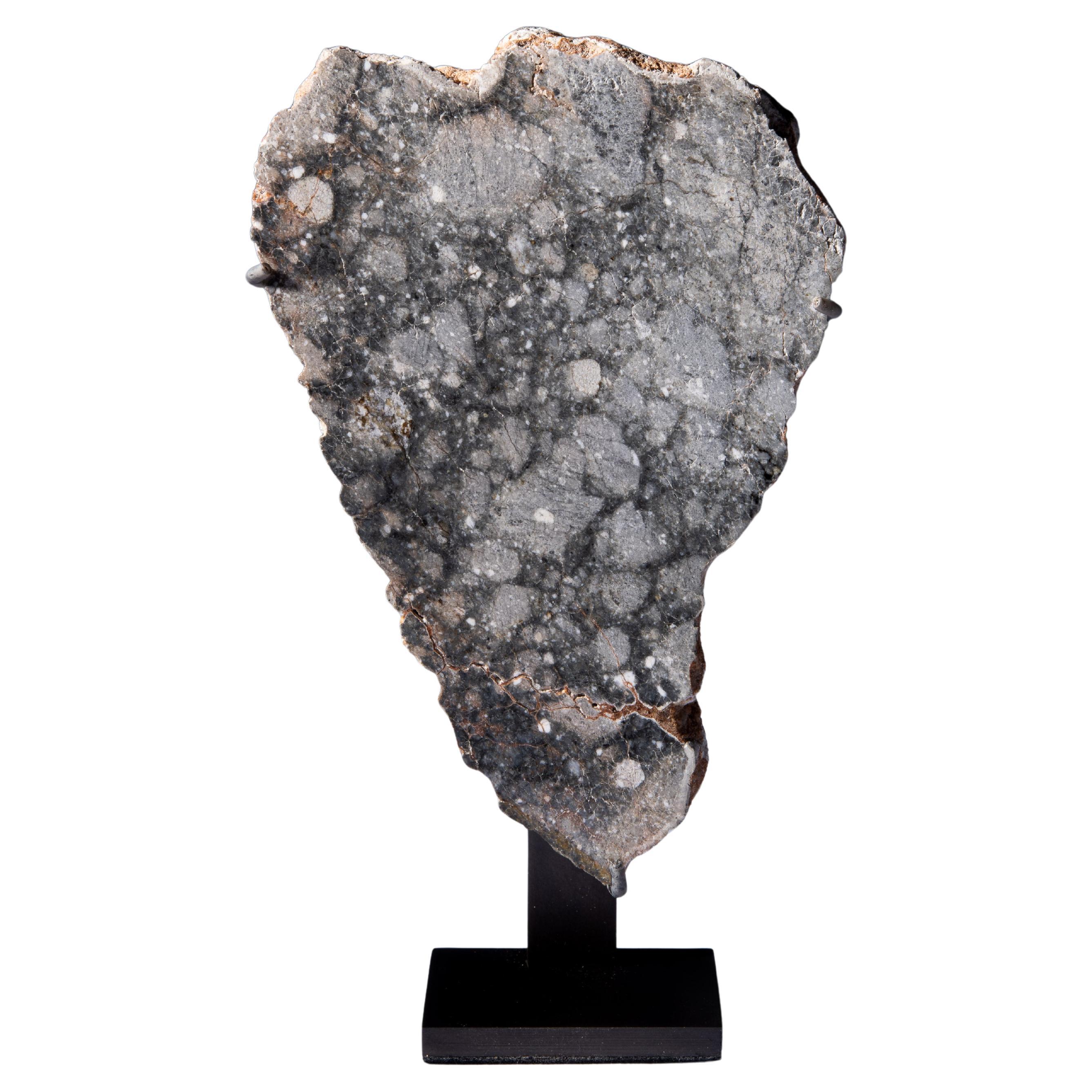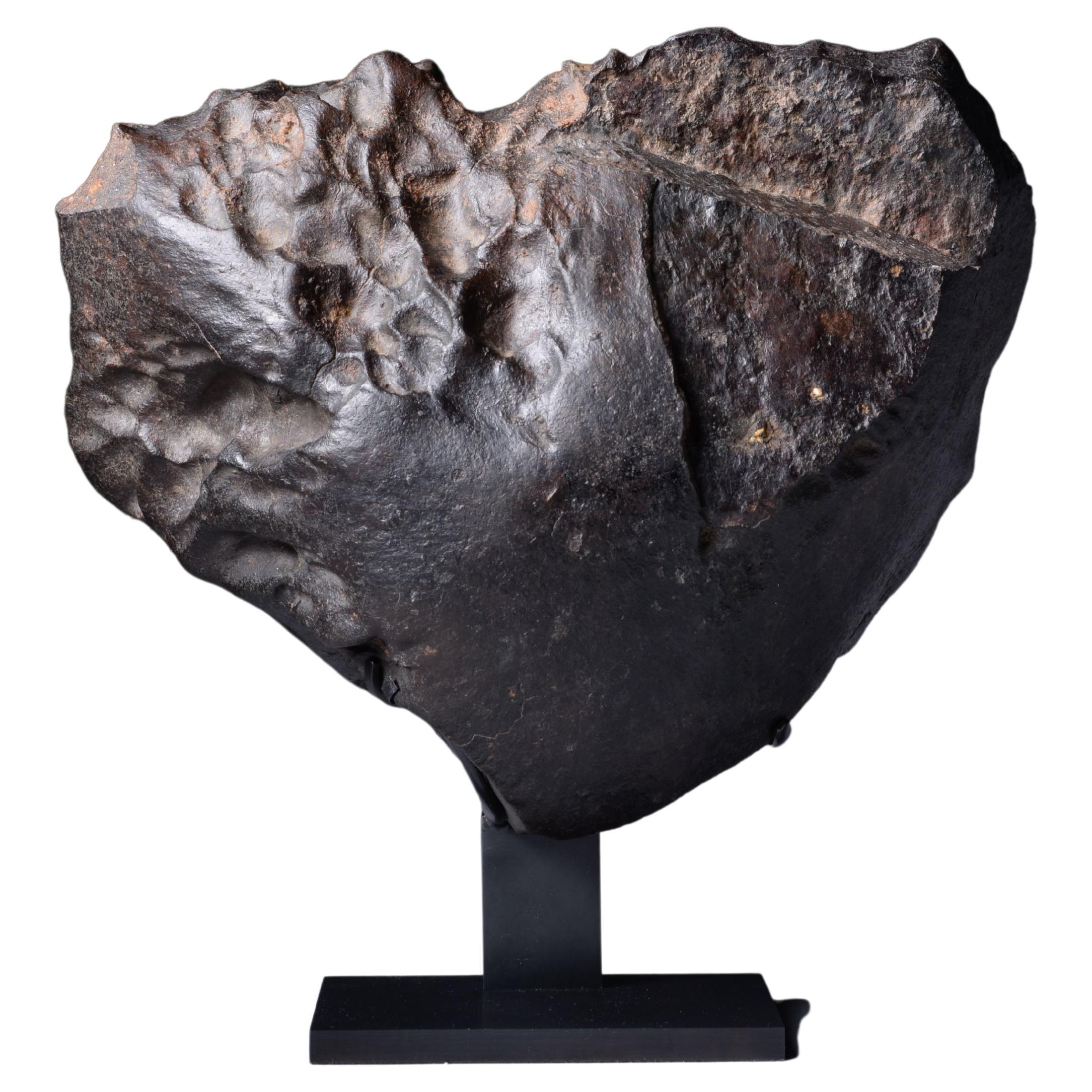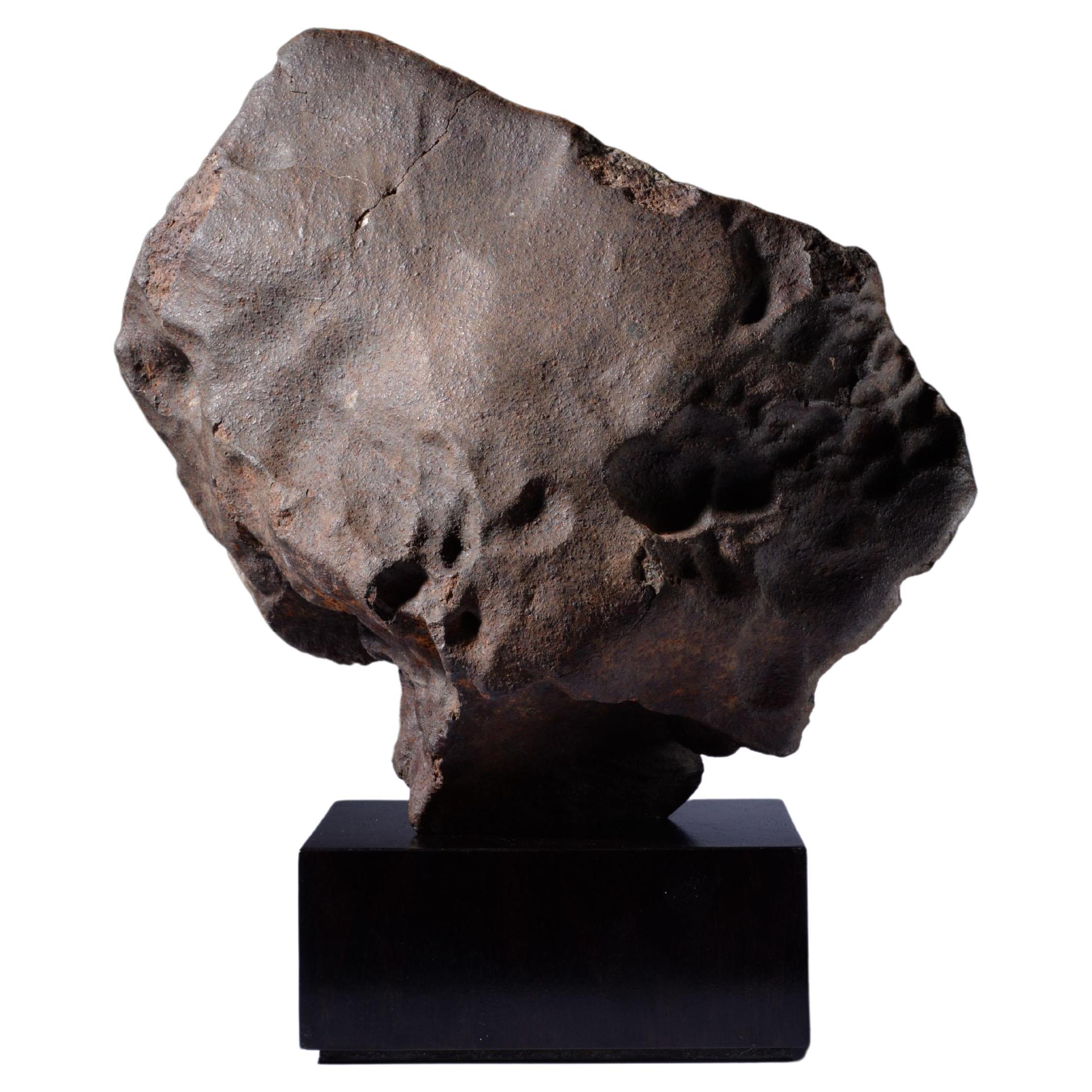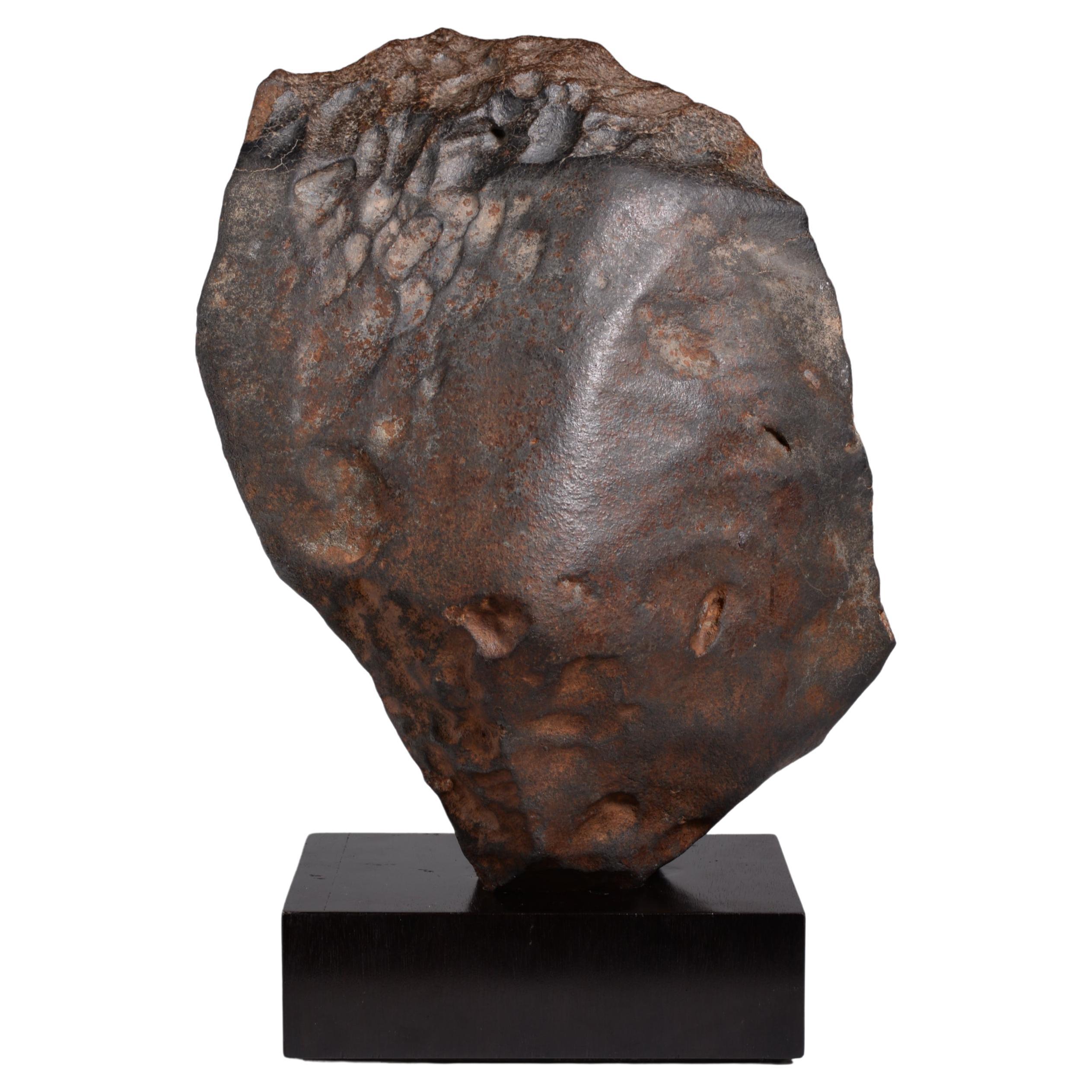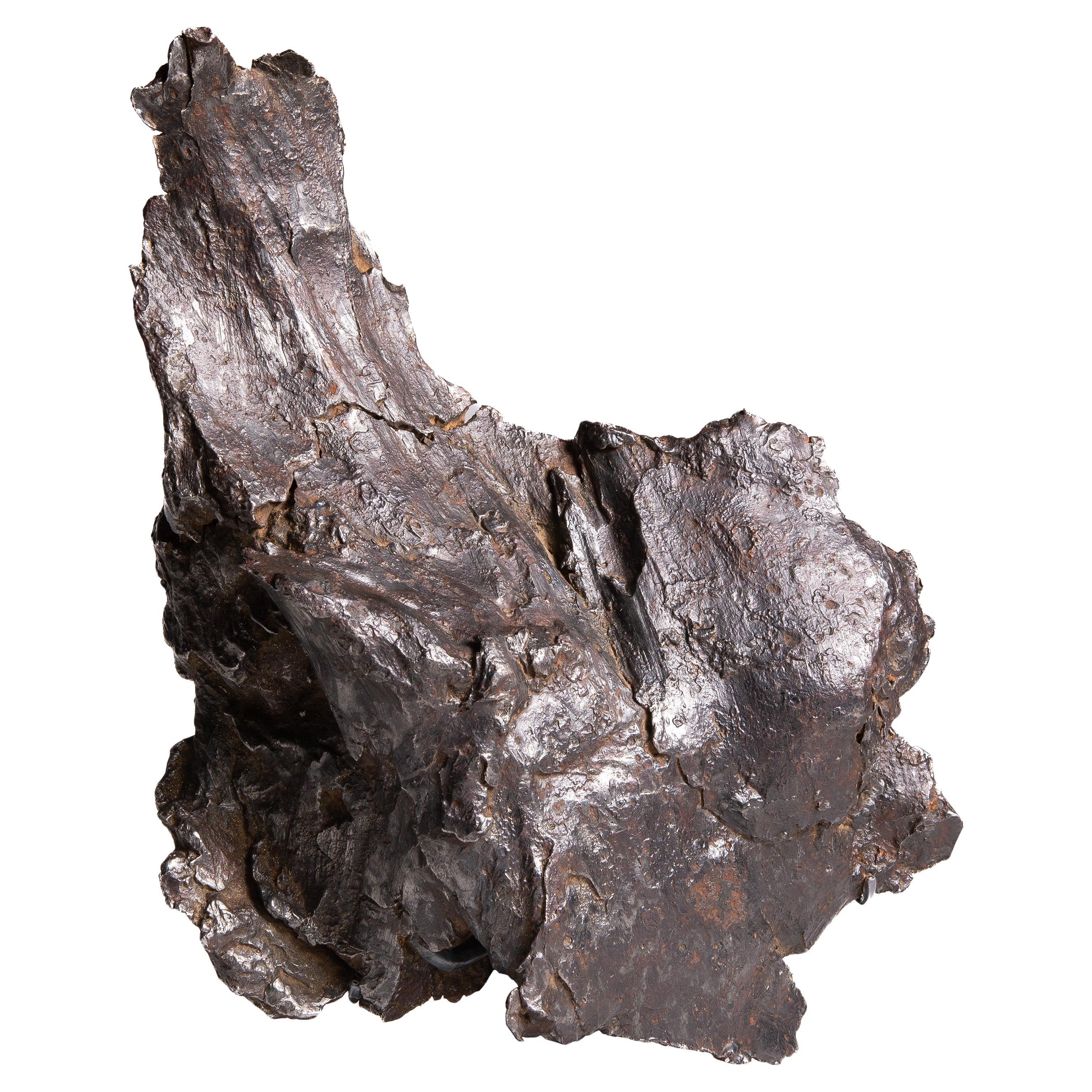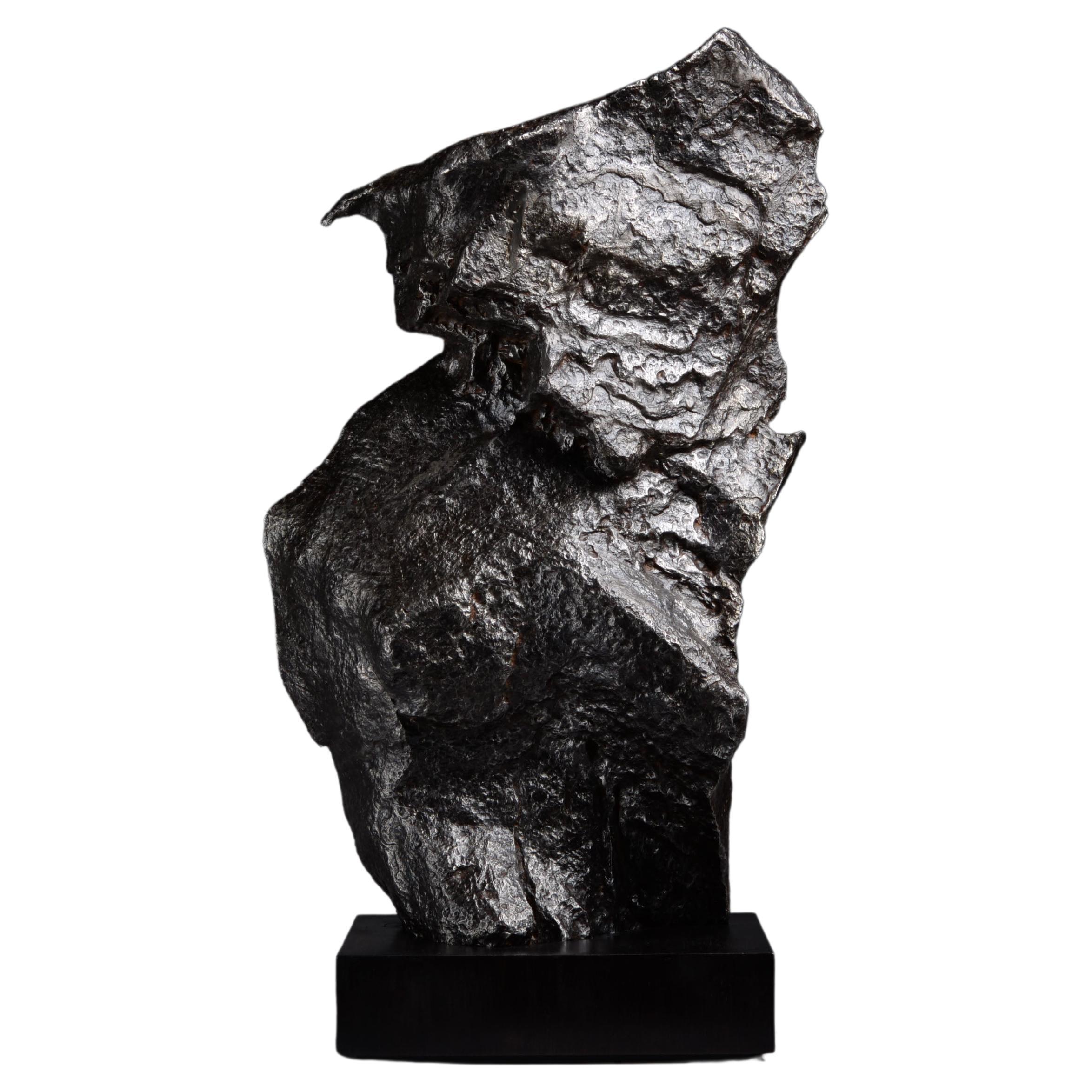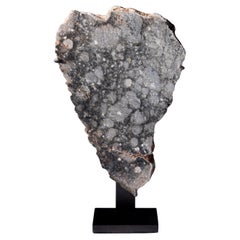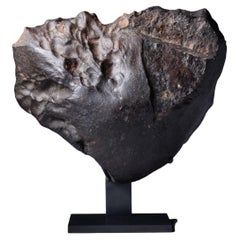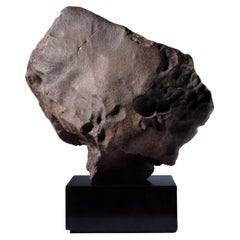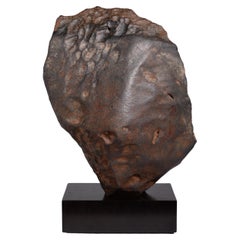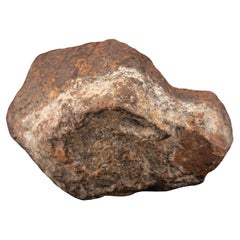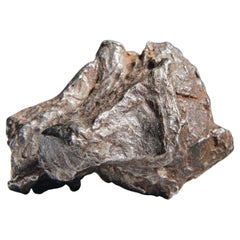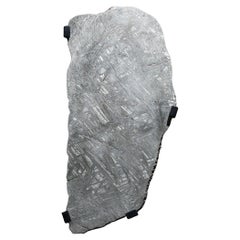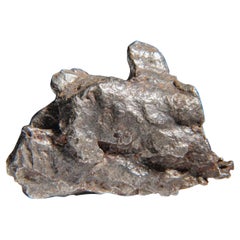Items Similar to Lunar Meteorite - A piece of the Moon
Want more images or videos?
Request additional images or videos from the seller
1 of 6
Lunar Meteorite - A piece of the Moon
$4,900
$14,00065% Off
£3,733.05
£10,665.8665% Off
€4,304.36
€12,298.1665% Off
CA$6,857.45
CA$19,592.7265% Off
A$7,662.06
A$21,891.6065% Off
CHF 4,008.11
CHF 11,451.7365% Off
MX$93,961.40
MX$268,461.1465% Off
NOK 51,215.99
NOK 146,331.4065% Off
SEK 48,566.33
SEK 138,760.9365% Off
DKK 32,125.73
DKK 91,787.8065% Off
Shipping
Retrieving quote...The 1stDibs Promise:
Authenticity Guarantee,
Money-Back Guarantee,
24-Hour Cancellation
About the Item
A beautiful fragment from a lunar meteorite, among the rarest of all geological finds. This specimen belongs to NWA 11303, a feldspathic regolith breccia which formed when the shock wave caused by an asteroid impact turned the fine-grained soil (or regolith) covering the surface of the lunar highlands into rock. Ejected from the Moon by the impact, it travelled hundreds of thousands of miles before falling to Earth. It then lay hidden among the sand dunes, blasted by the desert winds, before its discovery at a site near Tindouf, Algeria, in 2017. The dark grey stone has large white inclusions and a sand-polished, beautifully weathered desert patina. Cuts on one side to reveal a fine-grained matrix with diffuse large whitish to black clasts.
Many lunar surface samples were recovered during the Apollo missions. However, these could only be sampled from sites which were safe for humans and therefore only illustrate a small portion of the Moon’s surface. Lunar meteorites found on Earth offer a much better picture of the composition of the lunar surface, since they originate from many different areas of the Moon. The very first specimen was discovered on 17 January 1982, a decade after the last Apollo mission, and those recovered since have proved invaluable to the understanding of the history and geological evolution of the Moon. These lunar meteorites are extremely rare - when pairing together known specimens coming from the same meteoroid, only about a hundred are known.
Petrography:
(A. Irving and S. Kuehner, UWS) Breccia composed of angular mineral grains of anorthite, olivine, orthopyroxene, exsolved pigeonite, ferroan pigeonite, augite, ilmenite, Ti-chromite and fayalite in a partly vesicular matrix containing minor kamacite and barite.
Geochemistry:
Olivine (Fa26.7-47.2, FeO/MnO = 75-81, N = 2), orthopyroxene (Fs24.1Wo3.6, FeO/MnO = 67), orthopyroxene host (Fs47.1Wo3.3, FeO/MnO = 68), ferroan pigeonite (Fs52.4Wo18.8, FeO/MnO = 67), augite (Fs8.0Wo44.3, FeO/MnO = 35), plagioclase (An96.7-97.4Or0.2-0.1, N = 2).
Published:
Meteoritical Bulletin, no. 107, 2018.
- Dimensions:Height: 3.15 in (8 cm)Diameter: 2.96 in (7.5 cm)
- Materials and Techniques:
- Place of Origin:Algeria
- Period:
- Date of Manufacture:4.5 Billion y/o
- Condition:
- Seller Location:London, GB
- Reference Number:Seller: 427911stDibs: LU1052232663212
About the Seller
5.0
Recognized Seller
These prestigious sellers are industry leaders and represent the highest echelon for item quality and design.
Established in 2007
1stDibs seller since 2014
101 sales on 1stDibs
Typical response time: 1 hour
Associations
LAPADA - The Association of Arts & Antiques DealersInternational Confederation of Art and Antique Dealers' AssociationsThe British Antique Dealers' Association
- ShippingRetrieving quote...Shipping from: London, United Kingdom
- Return Policy
Authenticity Guarantee
In the unlikely event there’s an issue with an item’s authenticity, contact us within 1 year for a full refund. DetailsMoney-Back Guarantee
If your item is not as described, is damaged in transit, or does not arrive, contact us within 7 days for a full refund. Details24-Hour Cancellation
You have a 24-hour grace period in which to reconsider your purchase, with no questions asked.Vetted Professional Sellers
Our world-class sellers must adhere to strict standards for service and quality, maintaining the integrity of our listings.Price-Match Guarantee
If you find that a seller listed the same item for a lower price elsewhere, we’ll match it.Trusted Global Delivery
Our best-in-class carrier network provides specialized shipping options worldwide, including custom delivery.More From This Seller
View AllLunar Meteorite - A Piece of the Moon
Located in London, GB
A beautiful section of the lunar meteorite Gadamis 003, discovered in the oasis Berber town of Ghadames, Libya, and revealing a magnificent greyish-white spotted interior, evoking th...
Category
Antique 15th Century and Earlier Natural Specimens
Materials
Stone
Oriented Stone Meteorite
Located in London, GB
Oriented Stone Meteorite
Chondrite
5.00 kg
Detached from its parent body by a mighty impact, this large, oriented Meteorite travelled over a hu...
Category
Antique 15th Century and Earlier North African Natural Specimens
Materials
Stone
Sculptural Oriented Meteorite
Located in London, GB
Oriented Chondrite Meteorite Circa 4.56 Billion y/o
Chondrite
24 x 20 cm, 28 cm tall on base
7.1 kg
A sculptural and beautifully weathered chondrite meteorite; upon entering the atmosphere, this extraterrestrial stone would have heated the surrounding air to a temperature of over 1700 C, higher than that of the hottest lava on the planet, and enough to melt away its outer layers, leaving its surface rippled with regmaglypts, thumb-shaped impressions formed as superheated rock streaked off of the main body as it careened toward the earth. The last layer of the rock to melt would have re-solidified as the meteorite made impact, forming a charcoal coloured fusion crust, which has taken on a deep ochre-tinted patina.
Chondrite meteorites such as this example were formed at the very beginning of our solar system, by the accretion of various types of dust and small grains, adrift in the vacuum of space and, as such, provide important clues about the birth of our own planet. This piece is an especially rare specimen, known as an oriented meteorite...
Category
Antique 15th Century and Earlier Natural Specimens
Materials
Stone
Large Chondrite Meteorite with Regmaglypts
Located in London, GB
NWA 12759
Stone, Chondrite - L5
18.3 KG
“This specimen of the NWA 12759 L5 chondrite has a smooth posterior fusion crust where meteoritic melt pooled as the rock descended through the atmosphere and was heated by friction with molecules of air. The meteorite is from the L-chondrite asteroid that was destroyed by an energetic collision 470 million years ago.”
Dr Alan E. Rubin, PhD Department of Earth, Planetary, and Space Sciences, UCLA
Detached from its parent body by a mighty impact, this large, oriented meteorite travelled over a hundred million miles through space before falling to Earth in the North African desert. Beautiful regmaglypts radiate from the apex of its cone shaped nose. These elongated dimples formed when streaks of superheated molten rock streamed off the meteor’s surface as it blazed through the atmosphere. The entire piece is coated in a glossy, umber-coloured fusion crust and close examination reveals remnants of encrusted, orange dirt.
Whilst most meteors tumble as they travel through the Earth’s atmosphere, oriented meteorites...
Category
Antique 15th Century and Earlier Moroccan Natural Specimens
Materials
Stone
Meteorite Sculpture Formed by Atmospheric Explosion
Located in London, GB
On the morning of 12 February 1947, an enormous iron meteor passed through the Earth’s atmosphere. Exploding over the Sikhote-Alin mountains in South-eastern Russia, it created a fir...
Category
Antique 15th Century and Earlier Natural Specimens
Materials
Iron
Sculptural Iron Nickel Meteorite
Located in London, GB
A magnificent and extremely sculptural specimen of the Seymchan meteorite, recovered in the Russian Far East. This rare and large end cut preserves the patinated and partially melted...
Category
Antique 15th Century and Earlier Russian Natural Specimens
Materials
Other
$205,000
You May Also Like
Franconia Meteorite
Located in New York, NY
Found in 2002 at Franconia in Mojave, Arizona, this H5 chondrite meteorite can be found strewn amongst many other varieties of metorite in what has been coined a Dense Collection Are...
Category
Antique 15th Century and Earlier American Natural Specimens
Materials
Other
$3,675 Sale Price
25% Off
Genuine Natural Sikhote-Alin Meteorite from Russia (107 grams)
Located in New York, NY
An iron meteorite fell on the Sikhote-Alin Mountains, in southeastern Russia, in 1947. Though large iron meteorite falls had been witnessed previously and fragments recovered, never ...
Category
21st Century and Contemporary Russian Natural Specimens
Materials
Other, Iron
Exceptional & Rare Large Mounted Meteorite Slice
Located in London, GB
Rare Seymchan meteorites featuring the Wittmannstätten pattern are highly prized among collectors and meteorite enthusiasts due to their unique appearance and scientific significance...
Category
Antique 15th Century and Earlier Russian Natural Specimens
Materials
Iron, Nickel
Genuine Natural Sikhote-Alin Meteorite from Russia (105.5 grams)
Located in New York, NY
An iron meteorite fell on the Sikhote-Alin Mountains, in southeastern Russia, in 1947. Though large iron meteorite falls had been witnessed previously and fragments recovered, never ...
Category
21st Century and Contemporary Natural Specimens
Materials
Other, Iron
Genuine Natural Sikhote-Alin Meteorite from Russia (76.5 grams)
Located in New York, NY
An iron meteorite fell on the Sikhote-Alin Mountains, in southeastern Russia, in 1947. Though large iron meteorite falls had been witnessed previously and fragments recovered, never ...
Category
21st Century and Contemporary Russian Natural Specimens
Materials
Other, Iron
Genuine Large Canyon Diablo Iron Meteorite
Located in New York, NY
Genuine Canyon Diablo iron Meteorite in display box. This nickel-iron meteorite was found in the world famous Baringer crater (meteor crater) AZ, USA. Th...
Category
Antique 15th Century and Earlier American Natural Specimens
Materials
Other, Iron
$6,000 Sale Price
20% Off
More Ways To Browse
Moon Rock
Meteorite Sculpture
Hidden Safe
Moon Specimen
Lunar Meteorite
Sculptural Vanity
Vintage Decorative Coral
Coral On Stand
Large Geode Sculpture
Basalt Sculpture
Mineral Cluster
Blue Geode
Amethyst On Stand
Black Coral Sculptures
Congo Sculptures
Seashell Sculpture
Purple Geode Amethyst
Amethyst Geode Polished
